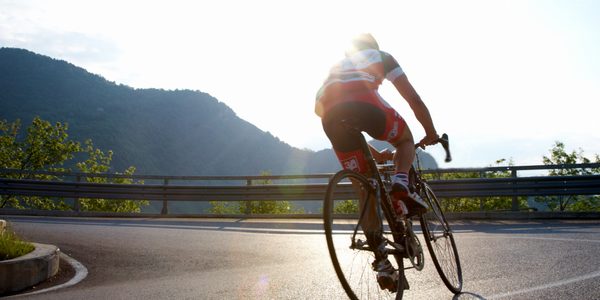下载PDF
Engaging Fans at one of the Largest Stadiums in the USA

技术
- 分析与建模 - 实时分析
- 应用基础设施与中间件 - 数据可视化
- 网络与连接 - 蓝牙
- 网络与连接 - 蜂窝
- 网络与连接 - WiFi
- 传感器 - 生物识别传感器
- 传感器 - 相机/视频系统
适用功能
- 商业运营
用例
- 行为与情绪追踪
挑战
吸引和取悦粉丝已成为第一要务。然而,直到 Sirqul 才发现体育场内球迷的身份和行为。此外,历史上独立的移动应用程序的渗透率只有 5-30%,因此场馆的数据、洞察力和与粉丝本身的互动很少。
这个大型体育场正在寻找一系列建议,以根据这些前所未有的数据改善球迷体验、增加收入并优化运营效率。
客户
未公开
关于客户
美国最大的体育场之一
解决方案
智能设备在不到一天的时间内部署完毕,并连接到 Sirqul 仪表板以进行实时分析、报告、触发和可视化。 Sirqul Smart Stadium 解决方案成功跟踪了超过 72,000 名球迷从门票被撕毁的那一刻起的客户旅程。
确定的用例:
- 将粉丝映射到撕毁的门票
- 使用入口/出口的大门停留时间
- 在 VIP 部分、儿童体验和第 3 方赞助激活区域内最活跃的区域进行微发现
- 季票持有者的客户旅程
- 时间和流程的游览优化
- 工作人员和安全安置
- 新粉丝与老粉丝
- 按产品兴趣与转化率划分的团队商店流量
- 食品、饮料和洗手间等待时间
- 生物识别、购买付款处理和酒精年龄验证
收集的数据
Facility Management, Payment, Security and access, Tracking Of People
运营影响
数量效益
相关案例.

Case Study
How Sirqul’s IoT Platform is Crafting Carrefour’s New In-Store Experiences
Carrefour Taiwan’s goal is to be completely digital by end of 2018. Out-dated manual methods for analysis and assumptions limited Carrefour’s ability to change the customer experience and were void of real-time decision-making capabilities. Rather than relying solely on sales data, assumptions, and disparate systems, Carrefour Taiwan’s CEO led an initiative to find a connected IoT solution that could give the team the ability to make real-time changes and more informed decisions. Prior to implementing, Carrefour struggled to address their conversion rates and did not have the proper insights into the customer decision-making process nor how to make an immediate impact without losing customer confidence.

Case Study
Creating a Customer Focused Shopping Experience with Blockchain & IoT
Gini & Jony, a Nucleus Vision client, and Brick and mortar stores retail customers in general hardly get personalized pricing, custom offers, or preferential treatment for being a brand or store loyalist. This primarily stems from the store’s inability to differentiate between customers in offline stores.

Case Study
The New Start Line Performance Data Goes Real Time
Cyclists typically had to take a device off the bike and connect to a computer to upload information. Data was imprecise and the analytics came long after the ride was over. Quarq wanted to find a new way to help atheletes adjust the rides in real time and help fans to get closer to the games.

Case Study
Smart Monitoring Solutions for Solar Panels: A Case Study
In 2018, the Japanese government approved the Fifth Energy Basic Plan, prioritizing renewable energy and setting it on a course to become the primary power source in Japan. This led to the re-introduction of solar panels as a renewable energy source. However, renewable energy sources such as solar power have weaker 'bearing capacity' than other power generation methods due to their characteristics. Solar power can be challenging to control because the output fluctuates based on weather conditions. If a large amount of electricity is supplied from the photovoltaic power generation sources to the grid when the power demand is low, the voltage and frequency can be disturbed, and the entire grid can become unstable. In some cases, it can lead to a large-scale power outage. This risk necessitated developments to solve problems like monitoring and controlling the amount of electricity produced by solar panels. NWC partnered with a client that generates and sells electricity serving residential, commercial, and industrial customers. The client needed to monitor the amount of electricity produced by 88,000 solar panels with a power generation capacity of 28 MW/h in a field size of 700 x 700 meters. The initial idea was a 13 kilometer wired optical network; however, the cost of over 1 billion yen made this approach expensive and impractical.

Case Study
Edge Solutions for Smart Monitoring of HVAC Manufacturing: A Case Study on Daikin India
Daikin India, a leading HVAC solutions provider, was seeking to optimize energy efficiency and productivity at its factories. The company wanted to implement an equipment monitoring and data collection solution for its HVAC subassembly lines. However, the challenge was that these lines featured numerous programmable logic controllers (PLCs), which limited the available installation space and network capabilities. Therefore, Daikin India needed a compact yet versatile solution for acquiring and visualizing production data without high networking/infrastructure costs. The company also required a system that supports smart real-time monitoring of HVAC subassembly lines, enables seamless acquisition and visualization of equipment data, minimizes and streamlines data transmissions, offers configurable PLC I/O data collection flexibility, and provides reliable industrial-grade hardware.

Case Study
EDF's Transformation: Enhancing Employee Experience through IT Modernization
EDF, a major UK utilities company, was grappling with a highly customized service management system that was largely manual, with limited potential for automation. This made it difficult to predict or prevent system failures and provide a resilient service. The company's IT system for incident handling was purely manual, leaving no room for modernization. EDF wanted to serve its business and residential customers better by improving the response time to rising energy demands. To achieve this, the company needed to provide its employees with the right tools for improved productivity, better collaboration, and an enhanced IT experience at a reduced cost to serve.





